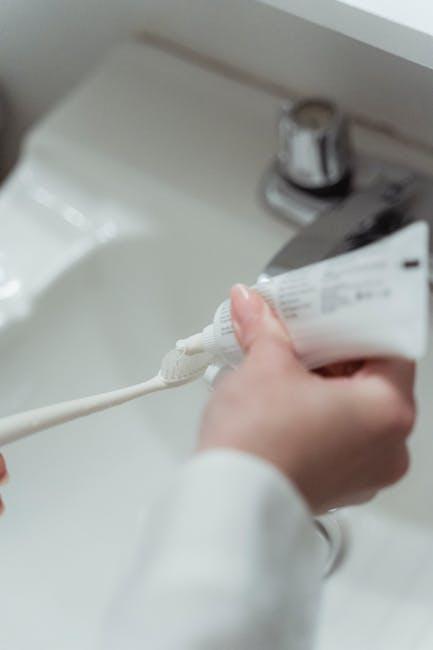Fluoride Ban Could Create Cavities For 1 Of Every 3 U.S. Kids – U.S. News & World Report
Fluoride has long been hailed as a critical component in dental health strategies across the United States. However, recent discussions and legislative proposals aiming to ban fluoride use—particularly in municipal water supplies and dental products—are causing widespread concern among dental health professionals and parents alike. According to U.S. News & World Report, this ban could lead to a rise in cavities for nearly one out of every three children in the U.S. This article explores the potential consequences of a fluoride ban, the importance of fluoride in cavity prevention, and practical advice for parents on maintaining optimal oral health in children.
What Is Fluoride and Why Is It Important?
Fluoride is a naturally occurring mineral widely recognized for its ability to strengthen tooth enamel and help prevent dental cavities. It is commonly added to public water supplies, toothpaste, mouth rinses, and various dental treatments. The Centers for Disease Control and Prevention (CDC) describes water fluoridation as one of the “ten great public health achievements of the 20th century.”
- Strengthens enamel: Fluoride repairs early tooth decay by remineralizing weakened enamel.
- Reduces cavities: It lowers the incidence of dental caries in children and adults.
- Cost-effective prevention: Fluoridated water saves money by reducing dental treatment needs.
The Potential Impact of a Fluoride Ban on U.S. Children
Eliminating fluoride from municipal water systems and dental products would have a disproportionate effect on children, many of whom rely on this passive form of cavity prevention. Experts estimate that a fluoride ban could cause a significant increase in childhood cavities—up to 33% would be affected. The potential risks include:
- Increased tooth decay and dental pain among children.
- More frequent and costly dental treatments for families.
- Wider dental health disparities, particularly in low-income communities where alternative dental care options are limited.
Statistical Overview: Fluoride Effects on Children’s Cavities
| Children Without Fluoride | Children With Fluoride | Difference |
|---|---|---|
| 33% likely to develop cavities | 22% likely to develop cavities | 11% reduction in cavities |
Benefits of Fluoride for Children’s Dental Health
To better understand fluoride’s importance, let’s break down the key benefits specifically for children:
- Prevents early tooth decay: Children’s teeth are more vulnerable to acids produced by bacteria in the mouth, and fluoride strengthens enamel early on.
- Supports permanent teeth health: Fluoride exposure during early childhood fosters stronger permanent teeth development.
- Easy and accessible protection: Fluoride reaches children from multiple sources, such as water and toothpaste, even in communities with limited dental visits.
Practical Tips to Protect Your Child’s Teeth Amid Fluoride Concerns
If you live in an area where fluoride use might be restricted or eliminated, consider these practical strategies to keep your child’s teeth healthy:
- Maintain a regular dental hygiene routine: Brushing twice daily with fluoride toothpaste is vital if available, or consult your dentist for fluoride alternatives.
- Monitor sugar intake: High sugar consumption increases cavity risk, so limit sugary snacks and drinks.
- Schedule regular dental check-ups: Early professional exams help identify and treat decay before it worsens.
- Consider fluoride supplements: Dentists can recommend fluoride vitamins or gels if water fluoridation isn’t an option.
- Promote healthy eating habits: Encourage fruits, vegetables, and dairy products that support oral health.
Case Study: The Effect of Fluoride Removal in Communities
In 2014, a Canadian city discontinued water fluoridation citing regulatory challenges. Subsequent studies revealed a marked increase in childhood cavities over five years, especially among underserved populations. Dental clinics in the area reported a 20% increase in pediatric caries treatment visits, highlighting fluoride’s protective impact.
Expert Opinions on Fluoride Safety and Necessity
Leading dental organizations, including the American Dental Association (ADA) and the American Academy of Pediatric Dentistry (AAPD), strongly advocate for continued use of fluoride in water and dental products. They warn that banning fluoride prematurely could reverse decades of progress in oral health. Experts emphasize that when used appropriately, fluoride is safe and effective without adverse health effects.
Summary Table: Pros and Cons of a Fluoride Ban
| Pros of Fluoride Ban | Cons of Fluoride Ban |
|---|---|
| Address concerns about excessive fluoride exposure | Sharp increase in childhood cavities |
| Supports personal choice about dental products | Higher dental costs for families |
| May reduce fluoride toxicity risk at extreme levels | Worsens oral health inequalities |
Conclusion: Protecting the Smiles of Future Generations
The prospect of a fluoride ban in the United States raises serious concerns for children’s dental health. With evidence pointing to a rise in cavities for one out of every three kids, fluoride remains a vital tool in preventing tooth decay and promoting lifelong oral wellness. Parents, healthcare providers, and policymakers must weigh these risks carefully and ensure access to safe fluoride exposure or effective alternatives. Prioritizing education, prevention, and early dental care will help safeguard the smiles of future generations against the unseen threat posed by removing fluoride from our communities.


